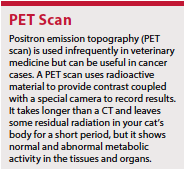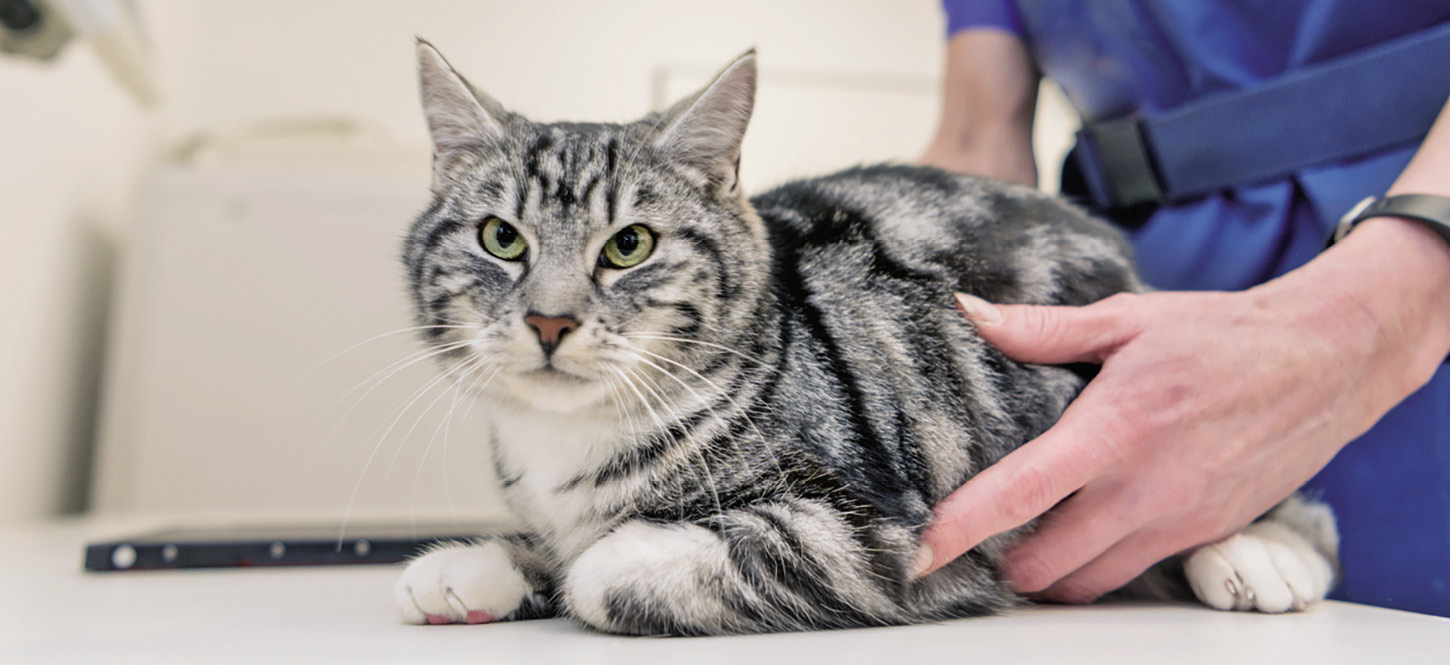Most people are familiar with standard diagnostic imaging. You expect an x-ray—technically called a radiograph—for a broken leg and an ultrasound for a bladder problem. Many veterinary clinics have the equipment to perform these diagnostic imaging tests in-office at a reasonable cost from $75 to $500, respectively.
Specialty clinics and university hospitals often have computed tomography (CT) and magnetic resonance imaging (MRI) capabilities. CT and MRI equipment is expensive and requires skilled technicians and veterinarians trained to interpret the results. The scans are expensive, ranging between $1,500 and $4,000. Luckily, most pet health insurance companies will cover these studies if medical necessity is documented by your veterinarian.
“Both of these techniques are state of the art and require careful evaluation by a specialist radiologist to ensure all the lesions and abnormalities are detected,” says Philippa Johnson BVSc, MRCVS, associate professor of diagnostic imaging at Cornell University’s College of Veterinary Medicine. “They are incredibly useful tools to help us diagnose disease in our case work ups.”
CT’s Diverse Ability
In simplest terms, a CT takes a series of detailed, thin cross-sectional radiographs of your cat. The scans are digitized and processed through a computer to provide virtual two- or three-dimensional views. One helpful description describes the individual radiographs as slices of a loaf of bread. Then the 3D computer manipulations show you the whole loaf.
CT scans provide a detailed look at the body, including the musculoskeletal system, organs, bones, blood vessels, and even fat. At Cornell, Dr. Johnson predominantly uses CT to screen for bone diseases such as complicated fractures and bone tumors, but a CT may be ordered to evaluate lung and heart disease and tumors. CT can be used for 3D reconstructions of a complicated fracture.
Bone and lung conditions are often best viewed with CT, as the contrast between the tissue being studied and surrounding tissues is great. Bone is dense and lung has a fair amount of air, so opposite situations, but both provide excellent contrast.
Newer CT machines can image a cat in less than 15 minutes, which may allow the use of sedation instead of general anesthesia. This may make CT an option for an elderly or very ill cat.
CT scans are an especially good choice to evaluate dental disease, ear problems, head trauma, possible tumors (masses), and brain lesions. They are a good choice for chest issues because a CT scan can adjust for respiratory movements while an MRI cannot. CT scans often include use of “contrast,” which involves injecting a dye that will be highlighted on the scan.
“Tumors tend to have a high vascularity and so are enhanced when we use contrast in CT. This allows us to identify the margins of tumors on CT, and we therefore use this technique for radiation and surgical planning,” says Dr. Johnson. A CT scan with contrast helps the surgeon or oncologist plan their treatment as precisely as possible and increases the probability of all the cancerous tissue being treated.
Time for an MRI
An MRI uses magnetic fields, combined with computer-generated radio waves, to provide a slightly different set of cross-sectional images that also can be combined into a three-dimensional view. No radiation is involved, but MRIs take 20 to 30 minutes to complete.
An MRI is superb for differentiating areas of low contrast, such as the brain, muscles, tendons and ligaments (as opposed to bones), the spinal cord, and the eyes. An MRI is the gold standard for brain or spinal-cord evaluations, says Dr. Johnson, because they give the most amount of detail. An MRI may detect brain changes compatible with seizures. For soft tissue, an MRI may be indicated for tendonitis in a shoulder or ligament tears in a stifle joint.
Risks
There are some risks associated with both scans. “MRI is a relatively low-risk procedure as it uses magnetic resonance energy. MRI can cause some burns to form on the skin in a rare number of cases. A CT scan does give every animal a relatively high dose of radiation. We don’t understand how this impacts animals, however in humans, this can predispose to cancers later in life,” says Dr. Johnson. With both, some cats can have reactions to the contrast agents. For an MRI, general anesthesia is recommended.
it uses magnetic resonance energy. MRI can cause some burns to form on the skin in a rare number of cases. A CT scan does give every animal a relatively high dose of radiation. We don’t understand how this impacts animals, however in humans, this can predispose to cancers later in life,” says Dr. Johnson. With both, some cats can have reactions to the contrast agents. For an MRI, general anesthesia is recommended.
Hopefully your cat will never need advanced imaging. If she does, however, the information it can provide helps develop a more precise treatment plan.




